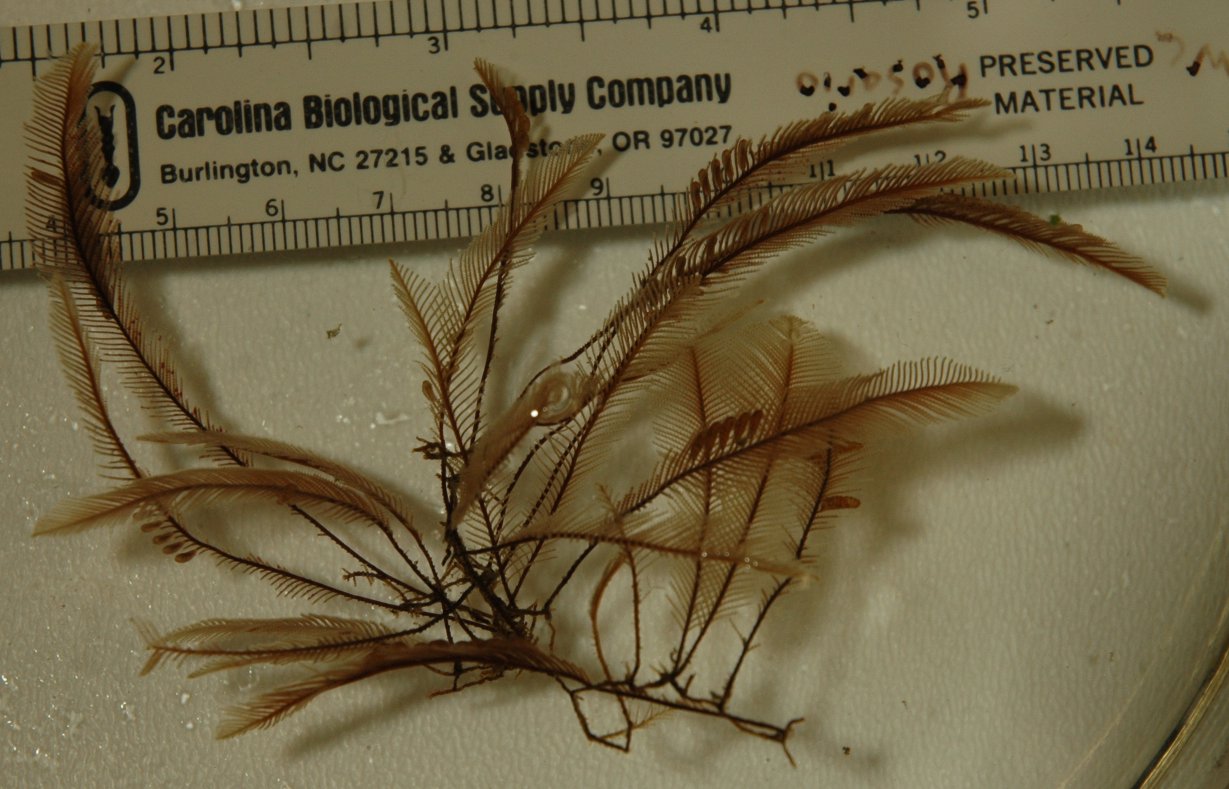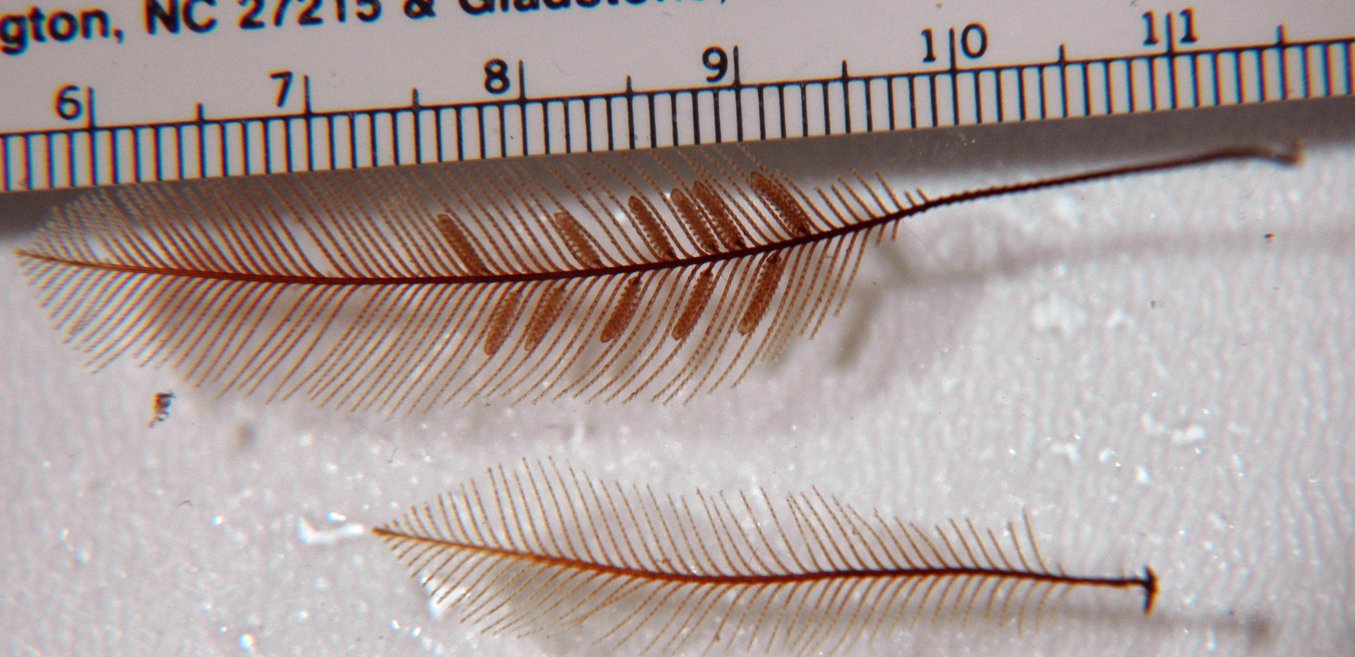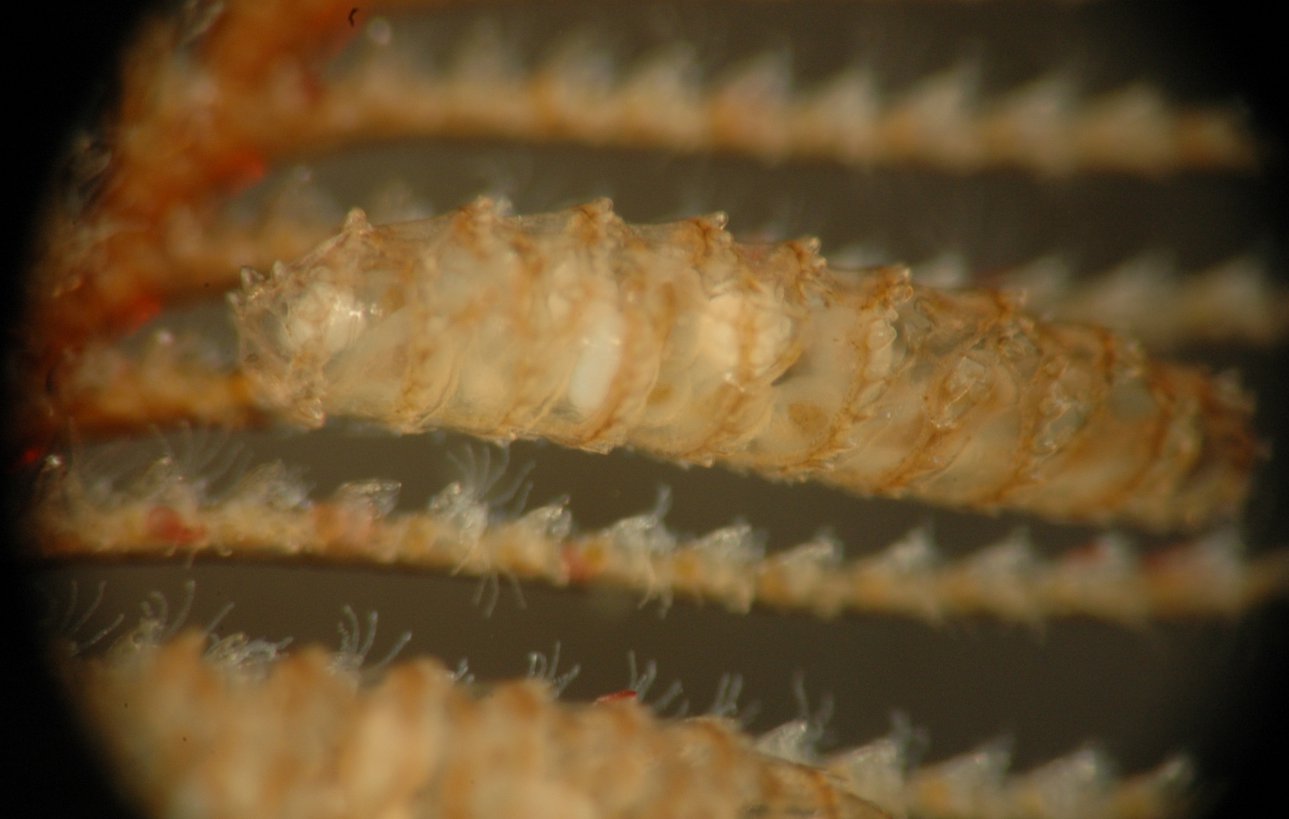Aglaophenia sp. (probably latirostris or struthionides)Common name(s): Ostrich plume hydroid |
|
| Synonyms: |  |
| Phylum Cnidaria
Class Hydrozoa Order Hydroida Suborder Thecata Family Aglaopheniidae |
|
| Aglaophenia sp. colony collected at 5 m depth off Sares Head. | |
| (Photo by: Dave Cowles, Jule 2006) | |
How to Distinguish from Similar Species: There are several species of Aglaophenia, which need more systematic work. Cladocarpus has gonophores which are on slender branches instead of within corbulae. The genus Aglaophenia has hydroids with sessile nematophores, hydrothecae with toothed margins, and gonophores enclosed in basketlike corbulae made of overlapping leaf-like structures.
Geographical Range: British Columbia, Canada to San Diego, CA.
Depth Range:
Habitat: Rocky subtidal habitats, especially where exposed to current.
Biology/Natural History: This hydroid retains the medusae within the corbulae. Corbulae containing male and female gonophores look slightly different. The medusae, which are highly modified, release eggs and sperm (the eggs are retained in the female medusae until fertilization, and it is the planula that is released). The planula larva settles to the bottom, crawls for awhile, and grows into a new hydroid. Caprellid "skeleton shrimp" and pycnogonids can often be found climbing on hydroids such as this species.
| Return to: | |||
| Main Page | Alphabetic Index | Systematic Index | Glossary |
References:
Dichotomous Keys:Flora and Fairbanks, 1966
Kozloff 1987, 1996
Smith and Carlton, 1975
General References:
Gotshall
and Laurent, 1979
Hinton,
1987
Johnson
and Snook, 1955
Kozloff,
1993
Morris
et al., 1980
Niesen,
1994
Niesen,
1997
Ricketts
et al., 1985
Scientific Articles:
Web sites:
General Notes and Observations: Locations, abundances, unusual behaviors:

A closer view of two Aglaophenia plumes.
The upper plume
has corbulae with the reproductive gonophores.

This closeup of a plume shows the individual polyps
in their hydrothecae
(note some polyps are open and actively feeding while others are
retracted).
The large structures are a string of corbulae
with the reproductive gonophores
(and captive medusae) inside.
Authors and Editors of Page:
Dave Cowles (2006): Created original page